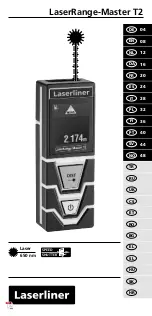
3
PEVQ™ Analyzer
Principle
Human Visual Model View
The internal PEVQ views expose an insight
to the human visual model at work. From
left to right:
1) Frame of the original reference
sequence
2) Corresponding frame of the degraded
(test) signal
3) Degraded signal after temporal and
spatial alignment
4) Difference error pattern according to
PEVQ's human visual model, this per-
ceptible error forms the basis for the
MOS calculation.
In the example shown, it can be noted that
the degraded signal contained a lower
frame rate than the original, which leads
to temporal and spatial alignment arte-
facts that may contribute to the error pat-
tern for the particular frame analyzed.
(This example was pictured intentionally
for illustration purposes).
The algorithm can be divided up into four
separate blocks. The first block – pre-pro-
cessing stage – is responsible for the spa-
tial and temporal alignment of the reference
and the impaired signal. This process
ensures that only corresponding frames are
compared to each other.
The second block calculates the perceptual
difference of the aligned signals. Perceptual
means that only those differences are taken
into account which are actually perceived
by a human viewer. Furthermore the activity
of the motion in the reference signal pro-
vides another indicator representing the
temporal information. This indicator is
important as it takes into account that in
frame series with low activity the percep-
tion of details is much higher than in frame
series with quick motion.
The third block in the figure classifies the
previously calculated indicators and detects
certain types of distortions.
Finally, in the fourth block all the appropri-
ate indicators according to the detected dis-
tortions are aggregated, forming the final
result - the mean opinion score (MOS). The
MOS value describes the video quality on a
range from 1 for very bad quality, to 5 for
excellent quality. Besides the final quality
score additional indicators are provided at
the output of the algorithm for further cause
analysis.
This approach to video quality estimation
includes the effects of both packet level
impairments (loss, jitter) and signal related
impairments such as blockiness, jerkiness,
blur and distortions caused by coding
processes.
Future releases will be further optimized in
computational performance and prediction
accuracy for high definition video.
OPTICOM’s PEVQ is one of the two top-
ranked models in the 2008 Video Quality
Experts Group (VQEG) multimedia evalua-
tion and approved for standardization.
Temporal indicators
Temporal
and spatial
alignment
Distortion
classifi-
cation
Reference Signal
Impaired Signal
Y
Cr
Cb
Perceptual
difference
(Y, Cr, Cb)
PEVQ Score
Indicators
for cause
analysis
}
time
time
Distortion
indicator
integration
PEVQ is a full reference, intrusive measurement algorithm for video quality. Its
basic structure is shown in the figure below.


























